MASCOT confirms what scientists have long suspected
Small fragments of carbon-rich asteroids are too fragile to survive entry into Earth’s atmosphere
Ryugu and other asteroids of the common ‘C-class’ consist of more porous material than was previously thought. Small fragments of their material are therefore too fragile to survive entry into the atmosphere in the event of a collision with Earth. This has revealed the long-suspected cause of the deficit of this meteorite type in finds on Earth. Researchers at the German Aerospace Center (Deutsches Zentrum für Luft- und Raumfahrt; DLR) have come to this conclusion in a scientific paper published in the journal Nature Astronomy. The results are based on high-resolution measurements of the surface temperature with the DLR radiometer MARA on board the German-French Mobile Asteroid Surface Scout (MASCOT) lander. On 3 October 2018, as part of the Japanese Hayabusa2 mission, MASCOT descended onto the almost one-kilometre-diameter asteroid Ryugu and sent spectacular images and physical measurements from the surface back to Earth.
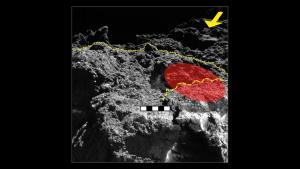
Investigated region on Ryugu.
“Ryugu surprised us,” says Matthias Grott, Principal Investigator for the MARA radiometer experiment at the DLR Institute of Planetary Research in Berlin and lead author of the study. “On the asteroid, we observed only larger fragments that are highly porous and probably very fragile.” Earlier telescopic infrared light curves of such carbon-rich asteroids acquired from Earth had been interpreted by researchers studying their thermal properties as bodies covered in sand- to pebble-sized particles. In total, 21 DLR scientists from institutes in Berlin, Bremen and Cologne participated in the study, together with international partners. “MASCOT has brought together DLR’s broad range of expertise in space research – from design, development and testing to experience in the scientific exploration of the Solar System,” says Hansjörg Dittus, DLR Executive Board Member for Space Research and Technology. “The first published results are impressive proof of this.”
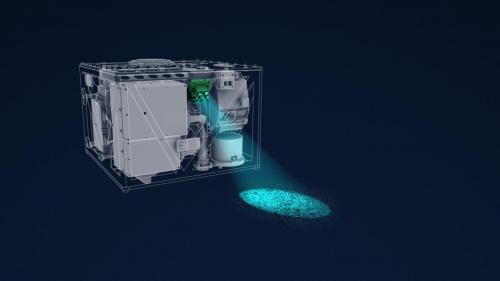
MASCOT radiometer MARA
Deficit in meteorite finds reveals the protection provided by Earth's atmosphere
Until now, only a few chondritic meteorites found on Earth have been identified as fragments of C-type asteroids, which are very common in the Solar System ('C' is the chemical symbol for the element carbon). Chondrules are small, millimetre-sized rock globules that formed in the solar nebula 4.5 billion years ago and are considered to be the basic building blocks of planet formation. "We can now confirm that fragments of these asteroids are very likely to break up further when they enter Earth’s atmosphere, and then usually burn up completely. This means that only the largest fragments reach the Earth’s surface,” explains Grott. “That is why meteorites from this type of asteroid are so rarely found on Earth.”
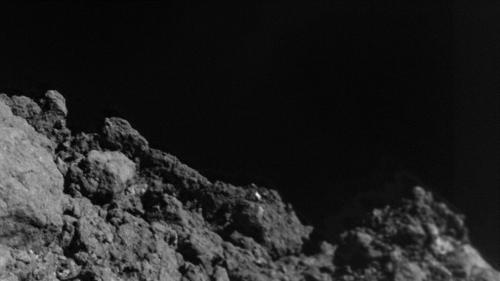
The surface of Ryugus from a few meters.
The good news is that, because of this, Earth’s atmosphere offers increased protection from C-type asteroids, which account for 75 percent of all asteroids. Ryugu is a C-class asteroid, a carbon-rich representative of the oldest bodies in the 4.5 billion-year-old Solar System, and thus a building block of planet formation. It is one of the oldest of the 17,000 asteroids with orbits known to intersect that of Earth. However, further research is necessary to determine the maximum asteroid size for which this atmospheric protection is effective.
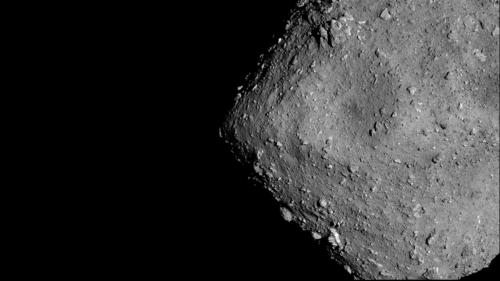
Cliose to the Ryugu asteroid.
The international research team led by Matthias Grott determined the increase and decrease of the surface temperature over the course of the asteroid’s roughly seven-and-a-half-hour diurnal cycle. This was accomplished by measuring the infrared radiation emitted by the surface during the day and at night, using the MARA radiometer. The MARA measurements made it possible to infer the thermal properties and density of the material. The data from MASCOT were transmitted to the Japanese Hayabusa2 spacecraft. The craft was located at an observing position three kilometres above the asteroid’s surface. From there, MASCOT sent all measurement and operational data to Earth.
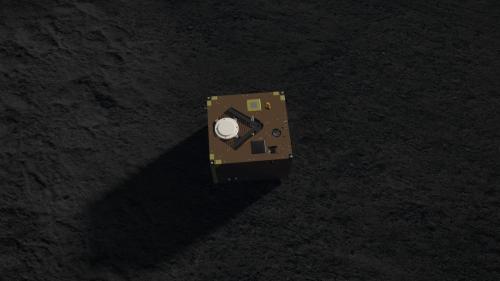
Asteroid lander MASCOT.
MASCOT landed on asteroid Ryugu on 3 October 2018 by free falling at walking pace. Six minutes after separating from Hayabusa2 at an altitude of 42 metres, the lander touched down on the asteroid’s surface having followed a ballistic trajectory. MASCOT bounced back up several metres, before the 10-kilogram experiment package finally came to rest. A rotating swing arm allowed MASCOT to turn to the 'correct' side and ‘hop’ across the surface. In total, MASCOT was active on Ryugu for 17 hours, one hour longer than anticipated.
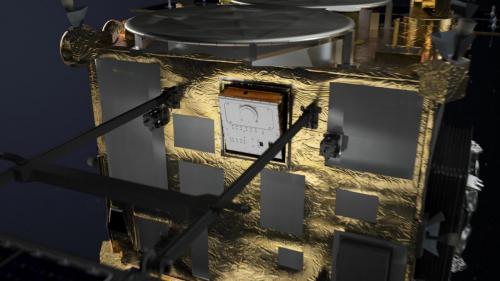
Asteroid lander MASCOT on board the Hayabusa2 space probe.
The gravitational attraction of Ryugu is 66,500 times weaker than that of Earth, so the small amount of momentum produced by the arm was sufficient. This technical innovation for an unconventional form of mobility on an asteroid surface was used for the first time in the history of space exploration as part of the Hayabusa2 mission. The Hayabusa2 mission on Ryugu will continue until the end of 2019, with the goal of returning samples of the asteroid material to Earth by 2020. On 11 July, Hayabusa2 successfully completed the second touchdown operation on the asteroid.
Source: Germany DLR
- 242 reads
Human Rights
Ringing FOWPAL’s Peace Bell for the World:Nobel Peace Prize Laureates’ Visions and Actions

Protecting the World’s Cultural Diversity for a Sustainable Future

The Peace Bell Resonates at the 27th Eurasian Economic Summit

Declaration of World Day of the Power of Hope Endorsed by People in 158 Nations

Puppet Show I International Friendship Day 2020

